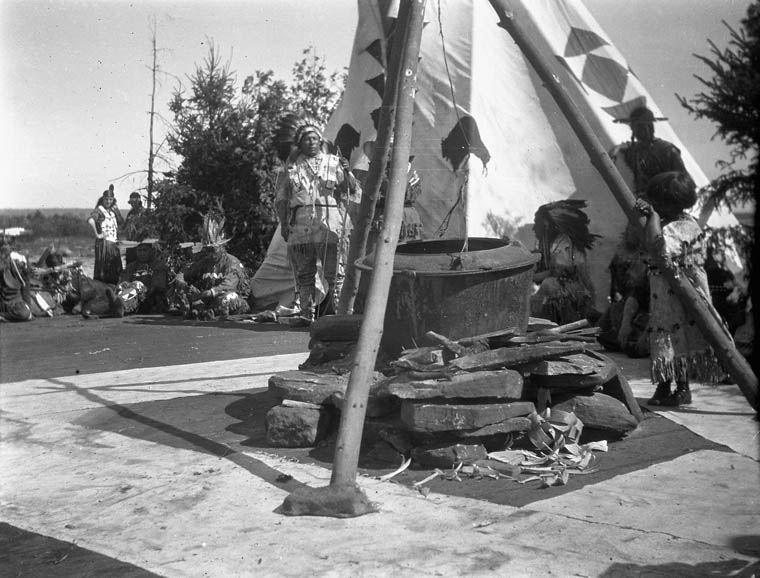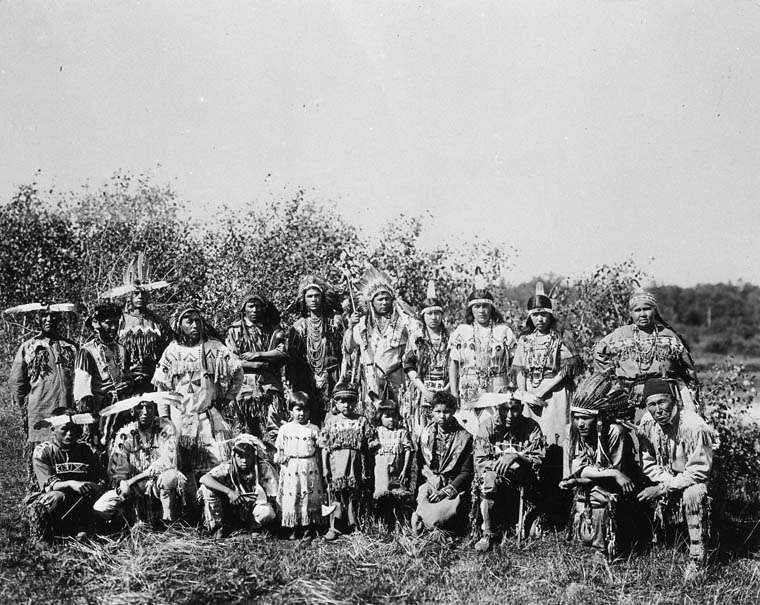Louis Olivier Armstrong, Anglican priest, land commissioner, Canadian Pacific Railway colonization agent (born 8 May 1851 in Maskinongé, QC; died 16 October 1937 in Toronto, ON). While serving as colonization agent, Louis Olivier Armstrong co-created pageants and plays that celebrated a colonial vision of the Indigenous past of Canada.
Education and Career
From 1870 to 1873, Louis Olivier Armstrong attended Huron College in Ontario to become an Anglican priest. He married Mary Agnes Lindsay, and together, they had three daughters. He served as a parish priest northwest of Montreal from approximately 1873 to 1879. In 1879, Armstrong moved to Emerson, Manitoba. Enamoured with Manitoba, Armstrong worked to draw British immigrants to the region and called for the development of a rail line from Emerson to Turtle Mountain. He eventually published a two-volume pamphlet in 1880 and 1881, extolling settlement in the Northwest. In March 1880, after ill health forced him to resign his ministry, Armstrong worked to promote immigration to western Canada. By 1881, he had accepted a position as land commissioner and colonization agent for the Canadian Pacific Railway’s (CPR) South Western Colonization line. Eventually, he moved to Montreal, Quebec in 1883, to continue working as the CPR’s colonization agent.
Armstrong ventured to the Algoma District shortly after the 1887 completion of the CPR’s line from Sudbury to Sault Ste Marie. As a colonization agent, his goal was to encourage settlement along the rail line and economic development that would increase the routes’ profitability. Armstrong advertised the fertility of the region as well as its potential as a summer retreat. He purchased a lot and built a cottage on McNabb Island (near Desbarats) in 1899.

The Hiawatha Play
Louis Olivier Armstrong was likely aware of the popularity of pageants and historical plays about Indigenous peoples. He felt that the Desbarats, Ontario region would be a good setting for a play. Together with Anishinaabeg George Kaboosa, they developed and offered the Hiawatha Play at Kensington Point, Desbarats in 1901. Alice Longfellow, one of Henry Wadsworth Longfellow’s daughters, and her family were in attendance. Henry Wadsworth Longfellow was the original author of the poem The Song of Hiawatha, upon which the Hiawatha Play was based. Alice Longfellow praised the play and the region. During the play’s run from 1901 to 1905, there were more than 300 performances to thousands of tourists who arrived by train and boat. Armstrong also owned and operated a hotel at Kensington Point that catered to tourists attending the Hiawatha Play and those seeking outdoors experiences. To increase tourism and attendance at the play, Armstrong arranged for the Hiawatha Play to be performed in Philadelphia, Boston and New York. In 1903, Armstrong, taking advantage of a new medium for advertising, filmed the Hiawatha Play. In 1905, Armstrong sold the rights to the Hiawatha Play to Petoskey, Michigan, a summer resort town on the Grand Rapids and Indiana Railroad. A version of the play was performed there until 1917. The Anishinaabe in Canada continued to perform the play after 1905, but they moved performances to the Garden River reserve.

Armstrong also created spectacles for the Quebec Tercentenary in 1909 and the Lake Champlain Tercentenary of 1909. Both tercentenaries celebrated Champlain’s arrival, settlement and exploration. However, Armstrong situated Indigenous participation as central to the colonial narrative. He cast Indigenous actors from Kahnawà:ke, Kanesatake, Garden River, Akwesasne and L'Ancienne-Lorette in Hiawatha the Mohawk. During the Tercentenary, the Indigenous participants performed stories of their past, including welcoming Cartier, fighting Champlain, and attacking or defending Dollard. Their performances were vital to the play. Armstrong ensured the cast was paid for the performances too.
Throughout the 1910s until his retirement in the late 1920s or early 1930s from the CPR, Armstrong continued to publish pamphlets and books as well as deliver lectures and show films he created about Canada. He also continued to work on promoting the economic potential of Canada, Sault Ste Marie and the Algoma region. In 1923, he participated in developing the Etienne Brule Play and Hiawatha Play for Sault Ste Marie’s Discovery Week. He lectured at and also created a play for the Canada pageant portion of the Great Empire Pageant for the British Empire Exhibition at Wembley, England in 1924.
Legacy
By incorporating film into the CPR’s Department of Colonization and Development, Louis Olivier Armstrong played an important role in the development of cinema in Canada. The 1903 filming of the Hiawatha Play was the first fictional film shot in Canada. He created plays about Indigenous peoples that celebrated colonization, exploration and extolled the vanishing Indian narrative (see also Colonialism in Canada). Indigenous peoples, however, readily took part in the performances for the opportunity to travel, earn money, speak their languages and meet fellow Indigenous actors. Armstrong’s Hiawatha Play has been largely forgotten by most Canadians. However, it continues to resonate in the United States. It also serves as a central narrative to the history of both the permanent and summer residents at Desbarats and to the Anishinaabe of Garden River First Nation.

 Share on Facebook
Share on Facebook Share on X
Share on X Share by Email
Share by Email Share on Google Classroom
Share on Google Classroom



